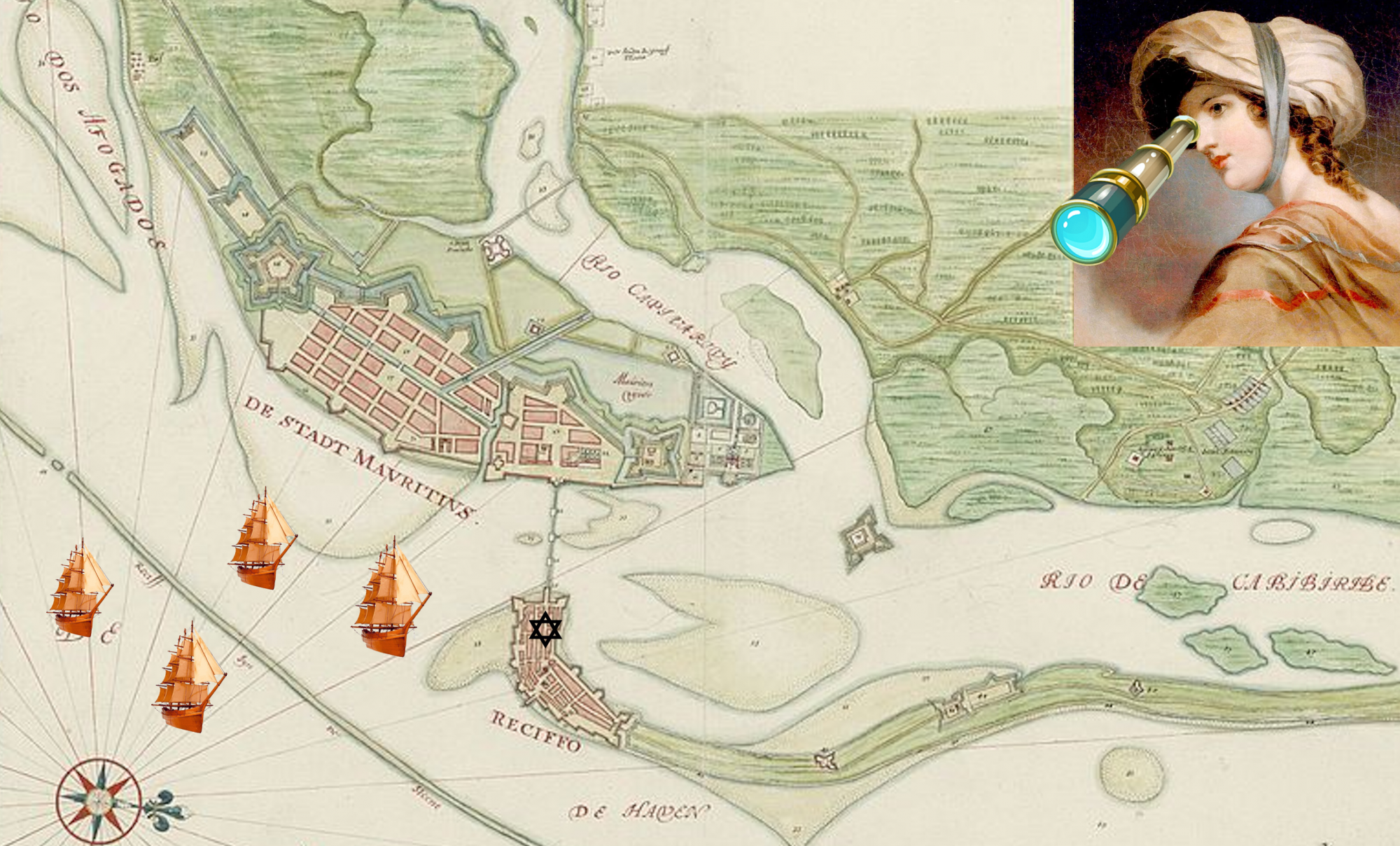

Menasseh ben Israel
The first Jewish settlements in England date back to 1070 CE, the reign of King William I. Yet, by the 1200s Jews were being persecuted. After massacres in the towns of London and York, the Jews were exiled from England altogether. During the seventeenth century some Jewish converts from Iberia had begun to settle there, but it wasn’t until after Amsterdam Rabbi Menasseh Ben Israel approached Puritan Oliver Cromwell that Jews were legally allowed back in England in 1655. By the 1690s, around 400 Jews had settled in London and worshipped openly as Jews.
Although they had been worshipping in a smaller building previously, in 1701 the London community Kahal Sahar Asamaim built the beautiful Bevis Marks Synagogue to echo the Amsterdam Esnoga. Many congregations in the British colonies had ties to Bevis Marks, and several synagogues in the Americas imitated Bevis Marks building, particularly one of the synagogues in Jamaica and the Touro Synagogue in Newport, Rhode Island.


Naphtali Franks.
Many prominent Jewish families came from London, such as the Franks family that lived in New York. Jacob Franks, for example, came to New York in 1708 where he married [Bilhah] Abigail Levy. Their oldest son Naphtali Franks moved back to England to work for his uncle’s firm. His mother wrote him many fine letters when he was there in which she calls him “Heartsey,” a pun on the symbol for the Hebrew tribe of Naphtali [hart] and the love “heart” she feels for him. Because of their strong ties to England, most of the Franks children sided with the British during the war. Hence after the war, almost all of the family returned to England

a Lamb, 1735, by Gerardus
Duyckinck (1695-1746)
The girl in the painting to the left is most likely Phila Franks, Naphtali’s sister. As an adult she made some choices that deeply saddened her parents. In a letter to Naphtali written on June 7, 1743 from “Flatt bush” (New York), Naphtali’s mother Abigail wrote of her utter shock when she learning of Phila’s secret marriage to Oliver DeLancey. Although from a very wealthy and distinguished family, DeLancey was not Jewish. Married secretly to Oliver in September, Phila lived with her parents throughout the winter and only confessed her deceit in the Spring. Although not particularly religious herself, Abigail was extremely upset and wrote to Naphtali,
Wath a Shock it was when they Acquanted me She [Phila] had Left the House and Had bin Married Six months I can hardly hold my Pen whilst I am writting it. . . . My Spirits Was for Some time Soe Depresst that it was a pain for me to Speak or See Any one
Poor Abigail! At least by sending dear “Heartsey” to London, the family had ensured that he could find a Jewish wife, his first cousin who oddly was also named Phila Franks! Naphtali and Phila became important members of London’s Jewish community and had four children of their own. Most Jews in the colonies married other Jews, but sometimes there just weren’t people of the right age of social class. Some like Phila did marry out, but others chose never to marry rather than bitterly disappointment their parents.

By the way, you probably noticed that the spelling in Abigail’s letter is a bit odd. This isn’t because she wasn’t well educated, but because spelling was not fixed and people could spell words how they heard them. Likewise people often capitalized words we wouldn’t capitalize today, either because they were nouns or just because they felt like it!
Rewrite the passage above from Abigail’s letter using modern English spellings, capitalization rules, and punctuation. Look up any words you don’t know.

